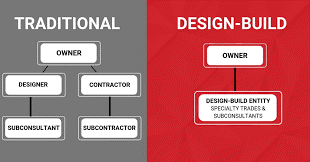|
|
|
In today’s construction industry, a preferred method for construction is Design Build. The Design Build process combines the design of the structure with the construction cost in one price submitted to the owner. In order to bid, the Design Build contractor needs to determine what electrical equipment is necessary and its costs prior to the Power Distribution System actually being designed. In a Design Build project, in contrast to conventional design / bid / construction, the contractor is locked into its bid. Currently, the bid for a Design Build construction project is based on estimates often relying on “rule of thumb” electrical design. The reality is that the actual quantity and price of the electrical equipment is likely not known at the time of bid. Two dilemmas related to the Design Builder’s estimates of these costs are: (1) if underestimated, the Design Builder pays the difference or (2) if overestimated, the Design Builder’s bid likely is not competitive. PowerCalc is based on design from the circuit to the grid's entrance to the building for exactingly accurate results. For the Design Build project, however, PowerCalc can be used in a “top-down” manner that is based on estimates similar to our competitors' software calculation models. The difference, however, is that PowerCalc’s estimates are still based on its 7.5 million calculations providing estimates much closer to actual cost. At PowerCalc’s WIZARD, estimates are input such as the panelboard’s “Main” size. With this single input, the results estimate specifications for related feeder, conduit, ground, overcurrent protection devices, voltage drop, equipment AIC ratings, and fault current calculations. It also generates the basic layout of the power distribution system identifying necessary equipment and automatically generates the 1 Line Diagram. Wizard PowerCalc’s 1 Line Diagram includes a Feeder Table indicating the number and size of feeders and conductors. Also useful for a Design Build estimate is that any change is easy. Change of an input or output anywhere, and all values on the power distribution system and 1 Line Diagram are instantaneously updated upstream and downstream.1 Line; Product of the Year; Video Demo 1 Line Although PowerCalc is exactingly accurate when used in a bottom-up-process of first inputting circuit values, its use as an estimating process for design build in a top-down process provides a wealth of information for those estimating Design Build projects. While still estimates, the quantity and sizing of necessary equipment is much closer to the “actual” and final numbers than is available by other means. The result is reduced losses and increased profits for Design Builders and electrical contractors. *********************************************************************************************************
Join us for a Free Demo of PowerCalc - the 1st automatic electrical engineering design software in the cloud for compliance with the NEC and with simultaneously generated 1 Line Diagram!
When: Friday, April 9 at 12:00 PM Eastern Time (US and Canada)
Sign Up:
After sign up, you will receive a confirmation email containing information about joining the meeting. You can also see our most recent demonstration on video: PowerCalc Demo: July 10, 2020
Our software is a fully integrated design application that saves you time and money. This is PowerCalc...an incredibly powerful tool that's unexpectedly easy to use for compliance with the NEC. |
|




